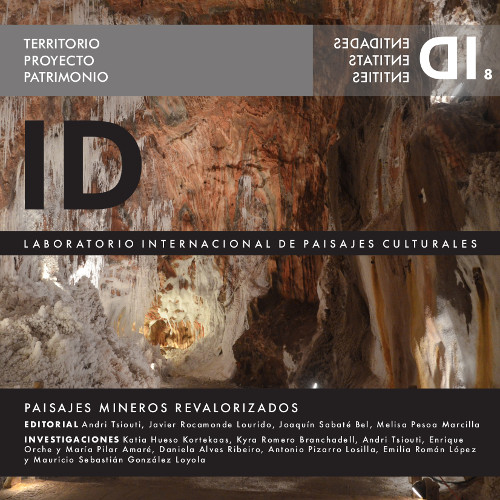EDITORIAL Mining landscapes revalorised
DOI:
https://doi.org/10.5821/identidades.9190Abstract
Mining landscapes are a living testimony of human effort made to manage the natural resources; they are a symbol of culture and memory of the communities that have transformed them. Mining landscapes are dynamic places that are being adapted to the necessities of every distinct moment. When a productive circle concludes, they often maintain pieces of evidences of the past, which are important cultural resources. However, the significant transformation of the landscape, the contamination caused due to the extraction activity, as well as the harsh working conditions, are factors that often provoke the rejection of these places and thus lead to their abandonment and decadence.
Nevertheless, the awareness of the values of abandoned mining sites, deriving from their strong links to mining culture and their high potential to generate benefits, attracts, in the last years, an increasing interest in the recovery and revalorisation of those sites. This tendency is materialised through extraordinary actions, heterogeneous to each other, varying from basic interventions of environmental restoration of the terrains to ambitious projects concerning the cultural heritage. At the same time, concern about the control of contamination impacts often leads to operations that put in risk the cultural values of mining activity.
The International Laboratory of Cultural Landscapes dedicates the eighth edition of IDENTIDADES to the mining cultural heritage, aiming to identify practices of revalorization of such landscapes, as well as to promote the awareness of the high potential lying to so many abandoned mining sites which are currently despised and degraded.
Downloads
Published
Issue
Section
License
Those authors who have publications with this journal, accept the following terms:
a. Authors will retain their copyright and guarantee the journal the right of first publication of their work, which will be simultaneously subject to the Creative Commons CC BY-NC-ND-4.0 recognition license that allows third parties to share the work provided that its author and its first publication are indicated in this journal, but they cannot be changed or used commercially.
b. Authors may adopt other non-exclusive license agreements for the distribution of the version of the published work (eg: deposit it in an institutional telematic archive or publish it in a monographic volume) provided that the initial publication in this journal is indicated.
c. Authors are allowed and recommended to disseminate their work through the Internet (e.g. in institutional telematic files or on their website) before and during the submission process, which can lead to interesting exchanges and increase citations. of the published work. (See The effect of open access).













